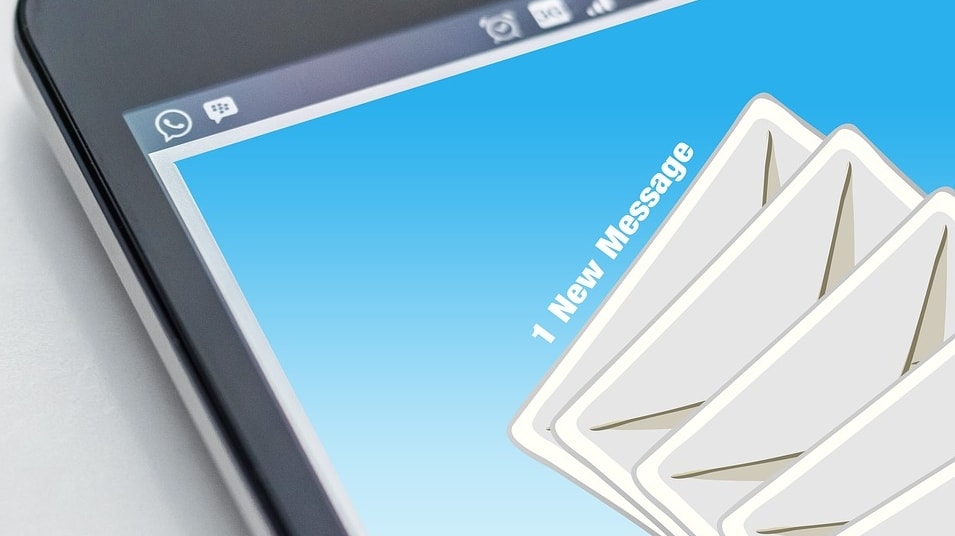 photo: Gerd Altmann/CC0/Pixabay.com
photo: Gerd Altmann/CC0/Pixabay.comThese factors are the sender’s name, the email subject line, and infrastructure quality, which ensures that messages aren’t treated as SPAM. Messages sent to the spam folder are rarely checked by recipients, which means advertisers’ money is wasted.
A survey by ARC Rynek i Opinia for Redlink found:
- 44% of Poles receive fewer than 10 promotional emails daily,
- 32% receive between 11 and 20 such emails daily,
- and 1 in 10 receives more than 20.
- The average Pole receives about 20 promotional emails daily. This is a significant amount, especially when combined with personal and work emails, adding up to dozens or even hundreds of emails daily, - says Tomasz Pakulski, Managing Director at Redlink, in an interview with Newseria Biznes. - Therefore, companies running email marketing campaigns find it increasingly challenging to stand out from the competition.
A company wanting to grab the recipient’s attention must focus on three elements that determine the open rate:
- sender’s name - the most important factor for 50% of respondents
- subject line - crucial for 49% of those surveyed
- content - most important for 36% of survey participants
The sender’s name is the most critical factor for half of the respondents. This detail is visible in every email program, so it’s important to indicate the company sending the promotional email. Tomasz Pakulski emphasizes that using ambiguous names, such as an employee’s name or fictitious information, can result in users ignoring the email.
The second factor influencing the open rate is the subject line. It should be relatively short, ideally under 50 characters, as emails are increasingly opened on mobile devices.
- It should also contain specific information about the benefit of opening the email. If there’s a 20% discount, state it in numeric form because users like numbers and they attract attention, - says Tomasz Pakulski in an interview with Newseria Biznes. - Visual elements like graphics and colors are less critical to recipients. Marketers often fall into the trap of overinvesting in email design, involving graphic designers, coders, creative departments, and advertising agencies to create engaging designs. However, design ranks third among elements users pay attention to.
Promotional emails can end up in three places: the main inbox, special sorting folders (such as offers tabs), or the SPAM folder. One-third of surveyed Poles do not read emails that end up in SPAM. To reach customers effectively, a company must ensure it has the right infrastructure for sending emails.
COMMERCIAL BREAK
New articles in section Marketing and PR
Dance in the media mirror. Between culture, business and viral fame
KFi
Over 78,000 media pieces, 1.6 billion potential views, and 197,500 social media mentions-dance in Poland is no longer niche. With a combined media value exceeding PLN 800 million, it now outperforms MMA, handball, and hockey.
PR in Poland. Ranking of the largest public relations agencies 2025
KFi
The smallest teams often generate the most publications, and agencies outside Warsaw are increasingly capturing media attention. This unexpected distribution of power is one of the key findings from the 2025 PR Agency Ranking in Poland, developed by Widoczni and IMM.
Connected TV and borderless advertising. The ID5 report
KFi
Viewers are moving away from cable TV. And they are doing it en masse. Already 86% of Europeans watch content via Connected TV and global ad spend in this segment is set to double by 2028. The industry is undergoing a communication revolution.
See articles on a similar topic:
Online advertising 2024/2025 report by IAB Poland
KFi
Online ads now consume 57% of all budgets. Companies spent 1.62 billion PLN on video formats alone. After leaner years, the numbers are rising sharply. Digital advertising grew by 20% in a year. Traditional formats are slowly fading.
A Socially Responsible Company. This Image Pays Off
RINF
Poles and Spaniards are the most likely in Europe to buy from socially responsible companies, according to the Global State of the Consumer Tracker report, developed in late June by Deloitte’s consulting experts.
Artificial Intelligence in B2B Sales. Forrester's Predictions for 2025
BARD
B2B boldly experimented with generative artificial intelligence in 2024, but next year, industry leaders plan to focus on sustainable solutions that increase revenue.
When Will Every Advertisement Become... a Store? Omdia Forecasts
KFi
Global consumer spending online is growing at an unprecedented rate. By 2025, it will reach $4.4 trillion, with the US alone accounting for $1.4 trillion. The boundaries between advertising, entertainment, and commerce are blurring, ushering in a new era of digital consumption.






























